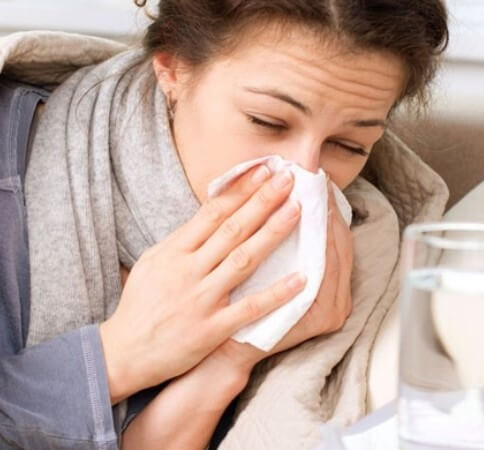Common Cold
The common cold is a viral infection of your nose and throat (upper respiratory tract). It’s usually harmless, although it might not feel that way. Many types of viruses can cause a common cold.
Children younger than 6 are at greatest risk of colds, but healthy adults can also expect to have two or three colds annually. Most people recover from a common cold in a week or 10 days. Symptoms might last longer in people who smoke. If symptoms don’t improve, see your doctor.
Symptoms:
Symptoms of a common cold usually appear one to three days after exposure to a cold-causing virus. Signs and symptoms, which can vary from person to person, might include:
- Runny or stuffy nose
- Sore throat
- Cough
- Congestion
- Slight body aches or a mild headache
- Sneezing
- Low-grade fever
- Generally feeling unwell (malaise)
The discharge from your nose may become thicker and yellow or green in color as a common cold runs its course. This isn’t an indication of a bacterial infection.
Causes:
Although many types of viruses can cause a common cold, rhinoviruses are the most common culprit.
A cold virus enters your body through your mouth, eyes or nose. The virus can spread through droplets in the air when someone who is sick coughs, sneezes or talks.
It also spreads by hand-to-hand contact with someone who has a cold or by sharing contaminated objects, such as utensils, towels, toys or telephones. If you touch your eyes, nose or mouth after such contact or exposure, you’re likely to catch a cold.
Prevention:
There’s no vaccine for the common cold, but you can take commonsense precautions to slow the spread of cold viruses:
- Wash your hands. Clean your hands thoroughly and often with soap and water, and teach your children the importance of hand-washing. If soap and water aren’t available, use an alcohol-based hand sanitizer.
- Disinfect your stuff. Clean kitchen and bathroom countertops with disinfectant, especially when someone in your family has a cold. Wash children’s toys periodically.
- Use tissues. Sneeze and cough into tissues. Discard used tissues right away, then wash your hands carefully.Teach children to sneeze or cough into the bend of their elbow when they don’t have a tissue. That way they cover their mouths without using their hands.
- Don’t share. Don’t share drinking glasses or utensils with other family members. Use your own glass or disposable cups when you or someone else is sick. Label the cup or glass with the name of the person with the cold.
- Steer clear of colds. Avoid close contact with anyone who has a cold.
- Choose your child care center wisely. Look for a child care setting with good hygiene practices and clear policies about keeping sick children at home.
- Take care of yourself. Eating well, getting exercise and enough sleep, and managing stress might help you keep colds at bay.

